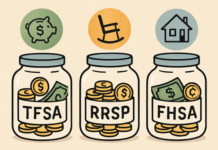No wild volatility—just brilliant, thoughtful and steady moves. And yes, a bit of patience is required.
What Makes an Investment “Low-Risk”?
Low-risk investments are designed to preserve your principal and deliver stable, often predictable, returns. They’re typically insured by government agencies or backed by stable institutions, and they avoid the sharp fluctuations of stocks or alternative assets. However, even among low-risk choices, there are important differences in liquidity, inflation protection, and potential for hidden risks.
“Not all so-called ‘low-risk’ investments are created equal—some carry hidden risks like liquidity constraints or inflation exposure.”
— Jeremy Keil, CFP, Founder, Keil Financial Partners
| Investment Type | Min. Investment | Expected Return | Liquidity | Inflation Protection | Tax Status | Risk Level (1-10) |
|---|---|---|---|---|---|---|
| High-Yield Savings | $0 | 4.5-5.5% | Immediate | ❌ Low | Taxable | 1 |
| CDs | $500-$1,000 | 4.5-5.5% | Locked | ❌ None | Taxable | 1 |
| Treasury Bonds | $100 | 4.5-5.0% | Moderate | ❌ Low | Fed tax-free | 2 |
| I Bonds | $25 | 5.27% (current) | 1-yr lock | ✅ Full | Tax-deferred | 1 |
| Municipal Bonds | $5,000 | 3.5-5.0% | Moderate | ❌ Low | Tax-free | 2 |
| Money Market | $1,000 | 4.5-5.0% | High | ❌ None | Taxable | 1 |
| Dividend Stocks | $1 | 3-5% + growth | High | ✅ Moderate | Qualified tax | 4 |
| REITs | $1 | 4-8% | Moderate | ✅ Good | Taxable | 5 |
Low-Risk Investment Return Calculator (2026 Projection)
Use this interactive calculator to estimate your potential returns from low-risk investments.
Inputs
-
Investment Amount ($)
-
Investment Duration (Years)
-
Investment Type (Dropdown):
-
High-Yield Savings
-
CDs
-
Treasury Bonds
-
I Bonds
-
Municipal Bonds
-
Output
-
Estimated annual return
-
Total value at maturity
-
Inflation-adjusted value (2026 projection)
Example
Investment Type Amount Duration Avg Yield Estimated Value High-Yield Savings $10,000 3 Years 5.1% $11,610 I Bonds $10,000 5 Years Inflation-linked $12,800* *Adjusted using projected CPI averages.
How to Choose the Best Low-Risk Investment for Your Situation
Choosing the right low-risk investment depends on your financial goals, time horizon, and liquidity needs. Not every option is right for every situation — and choosing incorrectly can limit your growth or lock your money when you need it most.
Use this decision-style guide to match your needs with the ideal investment options.
If You’re Building an Emergency Fund (Need funds in 0–6 months)
| Best Choices | Why |
|---|---|
| ✔ High-yield savings accounts | Immediate access + insured |
| ✔ Money market accounts | Higher earnings with liquidity |
| ❌ Avoid: CDs, bonds | Locked funds & penalties |
For Short-Term Goals (1–3 years)
| Best Choices | Why |
|---|---|
| ✔ Short-term CDs (6–18 months) | Predictable returns |
| ✔ Treasury bills | Government-backed safety |
| ✔ High-yield savings | Flexibility & access |
| ❌ Avoid: Stocks, REITs | Too volatile for short goals |
For Medium-Term Goals (3–7 years)
| Best Choices | Why |
|---|---|
| ✔ I Bonds | Inflation protection |
| ✔ Laddered CDs | Guaranteed returns and staggered access |
| ✔ Treasury notes | Moderate liquidity |
| ✔ Conservative bond funds | Stable income potential |
| ⚠ Consider: Dividend aristocrat stocks | Small exposure (10–15%) for growth |
For Long-Term Wealth or Retirement (10+ years)
| Best Choices | Why |
|---|---|
| ✔ I Bonds + Treasury bonds | Stability + inflation hedge |
| ✔ Dividend growth stocks | Income + appreciation |
| ✔ REITs | Real estate returns without ownership |
| ✔ Fixed annuities | Guaranteed lifetime income |
| ✔ Stable value funds (401k) | Low volatility + predictable returns |
For Income Generation (Retirees / Passive Income Seekers)
| Best Choices | Why |
|---|---|
| ✔ Fixed annuities | Monthly guaranteed payments |
| ✔ Dividend-paying blue-chip stocks | Cash flow + growth |
| ✔ Municipal bonds | Tax-free returns |
| ✔ Bond ladders | Interest income from staggered maturity |
| ✔ REITs | Real estate-style passive income |
For Tax Optimization (High Earners & Business Owners)
| Best Choices | Why |
|---|---|
| ✔ Municipal bonds | Federal & state tax-free |
| ✔ I Bonds | Tax-deferred & inflation-proof |
| ✔ Qualified dividend stocks | Lower tax rate |
| ❌ Avoid: Regular savings & CDs | Fully taxable interest |
Economic Trends and Their Impact
Recent Trends:
• Inflation remains above 3% reducing real returns on non-inflation-protected investments (BLS).
• Federal Reserve policy has kept rates high (Fed funds target: 5.25%-5.50% in July 20, boosting yields for savings accounts, CDs, and bonds.
• Bank failures in 2023-2024 have led investors to prioritize FDIC/NCUA insurance and government backing.
Impact on Low-Risk Investments:
• High-yield savings, CDs, and money market accounts now offer yields above 4%, the highest since 2007[1].
• Series I Bonds and TIPS are favored for inflation protection[2].
• Corporate bonds and preferred stocks offer higher yields but are exposed to default risk if the economy weakens.
2026 Economic Outlook (Expert-Backed)
According to Bureau of Labor Statistics, inflation is expected to stabilize between 2.8%–3.2% through 2026, keeping pressure on non-inflation-protected savings.
Meanwhile, Federal Reserve policy projections indicate:
-
Elevated interest rates through mid-2026
-
Continued attractiveness of savings accounts, CDs, and Treasuries
-
Strong demand for capital-preserving assets after recent banking instability
Why this matters for investors:
-
Fixed income remains attractive
-
Inflation-linked products outperform traditional savings
-
Government-backed instruments dominate “safe money” flows
Low Risk Investment Options for Home-Based Businesses
If you’re new to entrepreneurship, choosing a low-risk investment option is often the smartest way to get started. These businesses require minimal upfront capital, carry lower overhead, and offer more predictable growth. Unlike high-cost ventures like restaurants or retail stores, these models let you test the waters without draining your savings.
Examples:
- Freelance Services (writing, design, tutoring): Minimal investment beyond your laptop.
- Dropshipping Business: No inventory costs, flexible scaling.
- Digital Products (courses, templates, eBooks): Low upfront cost, passive income potential.
- Affiliate Marketing: No product creation, only marketing skills needed.
- Virtual Assistance Services: High demand, low setup cost.
| # | Investment Option | Risk Level | Avg Return (2026) | Liquidity | Inflation Protection | Best For |
|---|---|---|---|---|---|---|
| 1 | High-Yield Savings | Very Low | 4.5–5.5% | High | ❌ | Emergency funds |
| 2 | CDs | Very Low | 4.5–5.5% | Low | ❌ | Short-term goals |
| 3 | Treasury Bonds | Low | 4.5–5.0% | Medium | ❌ | Capital safety |
| 4 | Money Market | Very Low | 4.5–5.0% | High | ❌ | Cash parking |
| 5 | Fixed Annuities | Low | 3.5–5.0% | Low | ❌ | Retirement income |
| 6 | Municipal Bonds | Low | 3.5–5.0% | Medium | ❌ | Tax efficiency |
| 7 | Dividend Stocks | Medium | 3–5% + growth | High | ✅ | Income + growth |
| 8 | I Bonds | Very Low | Inflation-linked | Low | ✅ | Inflation hedge |
| 9 | P2P Lending | Medium | 5–7% | Medium | ❌ | Yield seekers |
| 10 | REITs | Medium | 4–8% | Medium | ✅ | Passive income |
| 11 | Robo-Advisors | Low–Medium | 4–6% | High | Partial | Hands-off investors |
| 12 | Stable Value Funds | Very Low | 3–4% | Low | ❌ | Near-retirement |
1. High-Yield Savings Accounts
Pros:
• FDIC/NCUA insured
Cons:
• No inflation protection
Best For:
2. Certificates of Deposit (CDs)
Pros:
• Easy access to funds
• FDIC/NCUA insured
• Higher yield than regular savings
Cons:
• No inflation protection
• Rates can fluctuate with market conditions
Best For:
Emergency funds or short-term savings goals with full liquidity.
3. Treasury Bonds
Pros:
• Backed by the U.S. government
• Predictable interest income
Cons:
• Lower returns compared to other investments
• Interest rate risk if sold before maturity
Best For:
Long-term, risk-averse investors seeking guaranteed returns.
4. Money Market Accounts
Pros:
• Tax-deferred growth
Cons:
• Potential hidden fees
• No FDIC insurance
Best For:
Retirees or pre-retirees seeking guaranteed income over time.
5. Fixed Annuities
Pros:
• Backed by government entities
Cons:
• Subject to credit risk (local governments)
Best For:
6. Municipal Bonds
Pros:
• Backed by government entities
Cons:
• Subject to credit risk (local governments)
Best For:
7. Dividend-Paying Stocks
Pros:
• Potential for capital appreciation
Cons:
• Subject to market volatility
Best For:
8. Series I Savings Bonds
Pros:
• Backed by U.S. Treasury
• Tax advantages if used for education
Cons:
• $10,000 annual purchase limit (electronic)
Best For:
9. Peer-to-Peer Lending (Low-Risk Portfolios)
Pros:
• Can diversify across many borrowers
Cons:
• Borrower default risk
Best For:
10. REITs (Real Estate Investment Trusts)
Pros:
• Regular dividend income
• Easy to buy/sell (if publicly traded)
Cons:
• Not FDIC insured
• Taxable income
Best For:
11. Robo-Advisors (Conservative Portfolios)
Pros:
• Low fees
• Diversification across low-risk assets
Cons:
• Market exposure (even if low risk)
Best For:
New or hands-off investors who want guided, low-risk investment plans.
12. Stable Value Funds (Mostly in 401(k)s)
Pros:
• Principal stability
• Consistent returns
Cons:
• Lower returns than equities or bonds
Best For:
Which One’s Correct for You? Confused?
- Want easy access? Test a high-yield savings account.
- Preparing for retirement? Fixed annuities or municipal bonds might be your thing.
- Like the idea of passive income? Dividend stocks or REITs could be a satisfactory alternative.
Initiate small. Stay constant.And let your money work quietly in the background while you concentrate on living life.
FAQ
1. What is the safest investment with the highest return in 2026?
High-yield savings accounts, Treasury bonds, and Series I Bonds are currently among the safest options offering competitive returns between 4.5%–5.5% or more. These investments are backed by banks or the U.S. government, making them stable choices for conservative investors. Although returns are lower than stocks, they provide reliability with minimal volatility.
2. Which low-risk investment is best for beginners?
Beginners often benefit most from high-yield savings accounts, money market accounts, and short-term CDs because they offer predictable returns and easy access to funds. There’s no complex management required, making them perfect starting points. As comfort grows, investors can diversify into I Bonds or conservative bond funds.
3. Are low-risk investments worth it during inflation?
Yes — especially inflation-protected investments like Series I Bonds and Treasury Inflation-Protected Securities (TIPS). While some safe choices may lag inflation, these options are designed to maintain purchasing power. Adding a combination of low-risk and inflation-adjusted assets protects long-term savings.
4. Can I earn passive income with low-risk investments?
Absolutely. Dividend-paying stocks, REITs, municipal bonds, and fixed annuities can generate consistent ongoing income without high volatility. These allow investors to grow wealth steadily while minimizing risk. They’re ideal for retirees and long-term income planners.
5. How much money do I need to start investing safely?
You can begin with as little as $1–$25 depending on the investment type. Many online platforms offer micro-investing with no minimums. Starting small and contributing regularly can compound significantly over time, making investing accessible for everyone.
Find a Home-Based Business to Start-Up >>> Hundreds of Business Listings.

















































